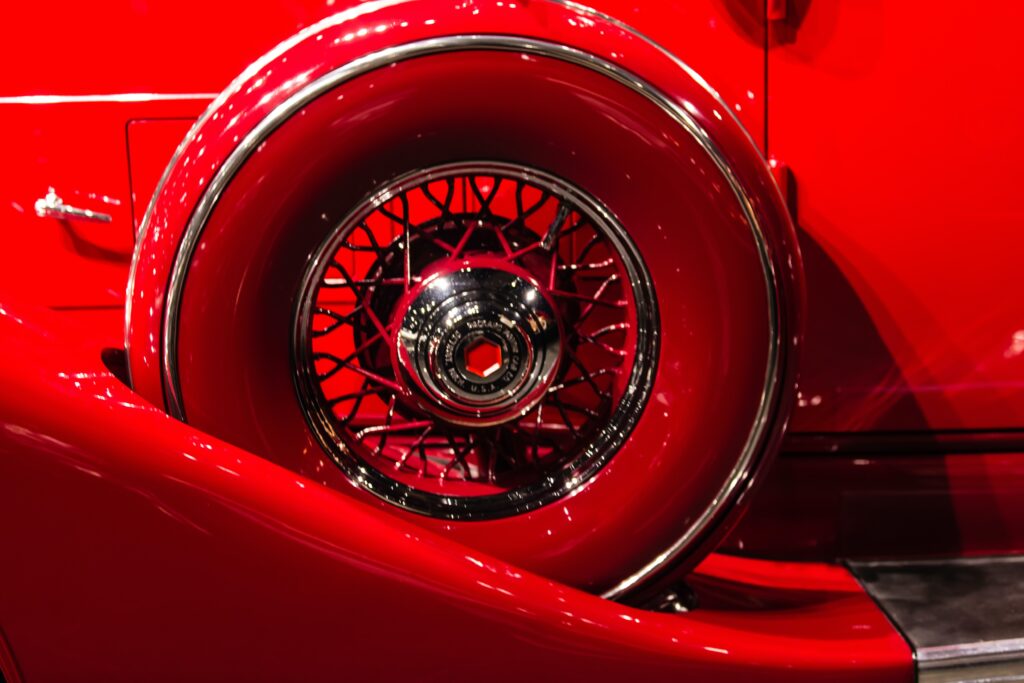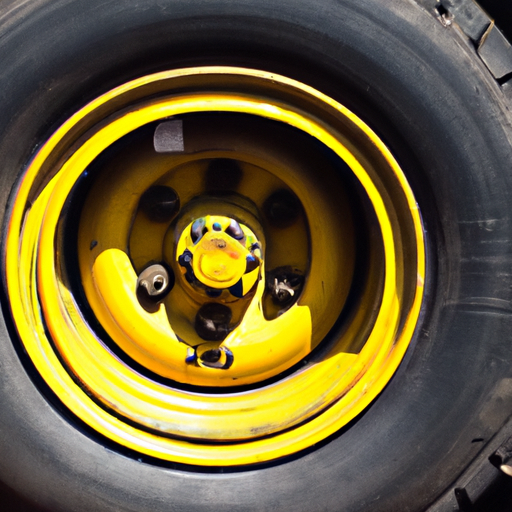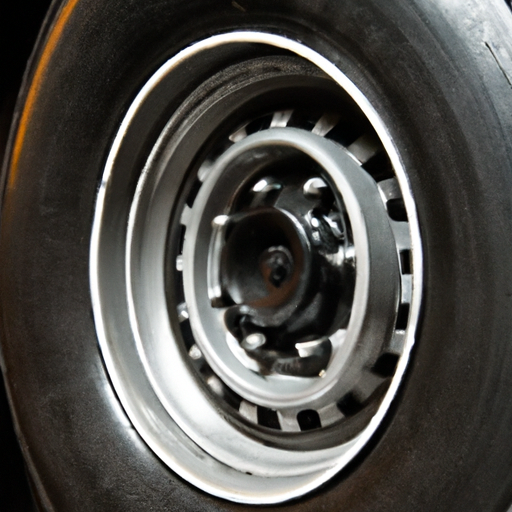Imagine you’re sitting in a park, watching a bus drive past you. Have you ever wondered, in that moment, just how many wheels that bus has? Well, wonder no more! This article is here to satisfy your curiosity and reveal the fascinating truth behind the number of wheels on a bus. So, sit back, relax, and prepare to uncover the mystery!
Types of Buses
City Buses
City buses are a common sight in urban areas, providing a convenient and affordable mode of transportation for commuters. These buses are designed to navigate through congested city streets and transport a large number of passengers efficiently. City buses typically have a single-decker design and come in various sizes and configurations to accommodate different passenger capacities. Whether you’re commuting to work or exploring the city, city buses are a reliable and accessible option to get around.
School Buses
School buses play a crucial role in transporting students safely to and from school. These buses are specifically designed with the safety of young passengers in mind, with features such as flashing lights, stop signs, and high seat backs. School buses often have a distinctive yellow color to enhance visibility and are equipped with safety measures like reinforced sides and emergency exits. They typically have a single-decker design and are capable of accommodating a large number of students.
Double-decker Buses
Double-decker buses are an iconic symbol of cities like London, offering a unique and spacious travel experience. As the name suggests, these buses feature two levels, allowing for a greater passenger capacity compared to single-decker buses. Double-decker buses are often used for sightseeing tours, providing an elevated view of the city’s landmarks. It’s a fun and memorable way to explore the city, especially if you can snag a seat on the top deck.
Coach Buses
Coach buses, also known as intercity buses, are designed for long-distance travel and offer a comfortable and convenient mode of transportation. These buses often feature amenities such as reclining seats, air conditioning, and onboard restrooms, making them a popular choice for travelers. Coach buses have a single-decker design and can accommodate a significant number of passengers, ensuring a smooth and enjoyable journey for all.
Mini Buses
Mini buses, as the name suggests, are smaller in size compared to other types of buses. These compact vehicles are often utilized for shuttle services, short-distance trips, or transportation within confined areas like airports or resorts. Mini buses can still accommodate a decent number of passengers, making them ideal for smaller groups or private transportation. With their maneuverability and versatility, mini buses offer a practical solution for various transportation needs.
Basic Wheel Configuration
Single Rear-Wheel Configuration
When it comes to the wheel configuration of buses, they are commonly classified into two types: single rear-wheel and dual rear-wheel configurations. In a single rear-wheel configuration, the bus has only one set of wheels located at the rear. This configuration is commonly found in smaller buses, such as mini buses, where the weight distribution allows for sufficient stability and maneuverability.
Dual Rear-Wheel Configuration
On the other hand, buses with a dual rear-wheel configuration have two sets of wheels at the rear. This configuration increases the weight-bearing capacity of the bus and provides enhanced stability, especially for larger vehicles like coach buses and double-decker buses. The additional wheels distribute the weight more evenly, making them better equipped to handle heavier loads and long-distance travel.

City Buses
Typical Wheel Configuration
City buses typically follow a single rear-wheel configuration, with a set of wheels at the rear to support the weight of the vehicle and provide stability during urban travel. This configuration allows city buses to navigate through narrow streets and sharp turns, making them well-suited for the challenges of city driving.
Number of Wheels
The number of wheels on a city bus can vary depending on the size and weight capacity of the vehicle. Smaller city buses may have as few as four wheels, while larger models can have up to six or more wheels. The additional wheels help distribute the weight of the bus more evenly, ensuring a smoother ride and improved handling.
School Buses
Typical Wheel Configuration
School buses typically feature a single rear-wheel configuration, similar to city buses. This configuration provides stability and maneuverability, making school buses well-suited for navigating residential areas and school zones. The single rear-wheel design allows drivers to negotiate tight turns and narrow streets while ensuring the safety of the young passengers onboard.
Number of Wheels
The number of wheels on a school bus can vary depending on its size and weight capacity. Smaller school buses often have four or six wheels, while larger models may have up to eight wheels. The multiple wheels contribute to the bus’s overall stability and weight distribution, ensuring a safe and smooth ride for students.

Double-decker Buses
Typical Wheel Configuration
Double-decker buses, with their unique two-level design, typically feature a dual rear-wheel configuration. The dual wheels at the rear provide the necessary stability and weight-bearing capacity to support the increased passenger load and the additional weight of the upper deck. This configuration ensures a safe and comfortable ride, even with a higher center of gravity.
Number of Wheels
Double-decker buses usually have a total of six or eight wheels. The additional wheels not only support the increased weight but also help distribute it more evenly across the axles. This distribution improves traction and stability, minimizing the risk of accidents and ensuring a smooth journey for passengers on both levels.
Coach Buses
Typical Wheel Configuration
Coach buses, designed for long-haul journeys, often adopt a dual rear-wheel configuration. This configuration provides the necessary stability and weight-bearing capacity to carry a large number of passengers and their luggage over long distances. The dual wheels at the rear help distribute the weight more evenly, ensuring a comfortable and safe ride for passengers.
Number of Wheels
Coach buses typically have six to ten wheels, depending on their size and weight capacity. The higher number of wheels allows for better weight distribution and increased stability, particularly when navigating highways and dealing with varying road conditions. The additional wheels also contribute to enhanced braking and handling capabilities, ensuring a smooth and reliable long-distance travel experience.

Mini Buses
Typical Wheel Configuration
Mini buses, being smaller in size, often follow a single rear-wheel configuration. This configuration provides sufficient stability and maneuverability for their intended purposes, which typically involve short trips or transportation within restricted areas. The single rear-wheel design allows mini buses to navigate tight spaces and congested areas with ease.
Number of Wheels
The number of wheels on a mini bus usually ranges from four to six, depending on factors such as weight capacity and design. The additional wheels in a six-wheel configuration help distribute the weight more evenly, improving traction and stability during short-distance travels. Mini buses, with their compact size and efficient wheel configurations, serve as convenient transportation options for various purposes.
Additional Wheel Configurations
Front-Wheel Drive Buses
While the rear-wheel configuration is more common in buses, there are instances where front-wheel drive buses are used. Front-wheel drive buses feature the engine and transmission located at the front, which drives the front wheels. This configuration offers advantages such as improved traction, especially in slippery conditions, and better maneuverability in tight spaces. Front-wheel drive buses are commonly utilized in smaller buses or shuttle services.
All-Wheel Drive Buses
All-wheel drive buses, as the name suggests, feature power delivered to all wheels simultaneously. This configuration provides enhanced traction and stability, making these buses suitable for challenging terrain or areas with inclement weather conditions. All-wheel drive buses are often used in regions with rough terrain, remote areas, or for specific applications such as off-road tours.

Wheel Anatomy
Tire Types
Buses are equipped with different types of tires depending on their purpose and requirements. Common tire types include all-season tires, which provide a balance of performance and durability in varying weather conditions, and winter tires, designed for enhanced traction in cold and snowy conditions. Additionally, specialized tires such as off-road or touring tires may be used in specific bus applications.
Rims
Rims, also known as wheels, provide the structural support for the tires and are crucial components of a bus’s wheel assembly. Rims are typically made of materials like steel or aluminum alloy, offering strength and durability. The design and size of the rims can vary depending on the specific bus model and its intended use.
Hubcaps
Hubcaps are decorative covers that fit over the center of the rims, adding a sleek and finished appearance to the wheels. While hubcaps primarily serve an aesthetic purpose, they also protect the wheel assembly from dirt, debris, and corrosion, helping to prolong their lifespan and maintain the overall visual appeal of the bus.
Axles
Axles play a vital role in supporting the weight of the bus and transmitting power from the engine to the wheels. Buses typically have multiple axles, each responsible for supporting and rotating a set of wheels. The number of axles varies depending on the bus’s size, weight, and intended use.
Factors Affecting Wheel Count
Bus Size
The size of a bus directly influences the number of wheels it requires. Larger buses, such as coach buses and double-decker buses, typically have more wheels to distribute the weight and ensure stability. Smaller buses, like mini buses, often have fewer wheels while still maintaining sufficient stability and maneuverability.
Number of Axles
The number of axles on a bus is also related to its wheel count. Each axle supports a set of wheels, so a higher number of axles corresponds to more wheels. Buses with multiple axles have better weight distribution and improved stability, enabling them to handle larger passenger loads and maintain control on longer journeys.
Weight Capacity
The weight-carrying capacity of a bus influences its wheel configuration. Buses designed to transport larger passenger volumes or accommodate heavy equipment, such as coach buses, require additional wheels for optimal weight distribution. Meeting weight capacity requirements ensures passenger safety and overall bus performance.
Customizations and Modifications
Customizations and modifications made to a bus can lead to variations in its wheel count. For example, buses converted into RVs or mobile homes may undergo structural changes that affect the original wheel configuration. Additionally, specialized buses used for specific purposes, such as mobile libraries or medical clinics, might have unique modifications that impact their wheel count and overall design.
In conclusion, the number of wheels a bus has depends on various factors such as its type, size, weight capacity, and intended use. From city buses to school buses, double-decker buses to coach buses, and mini buses, each type has its own typical wheel configuration and number of wheels. Additional wheel configurations, such as front-wheel or all-wheel drive, cater to specific requirements and conditions. Understanding the wheel anatomy and the factors influencing wheel count provides valuable insight into the functioning and design of buses. Whether you’re a commuter, student, or traveler, next time you hop on a bus, you’ll have a greater appreciation for the wheels beneath you and the engineering behind them.


